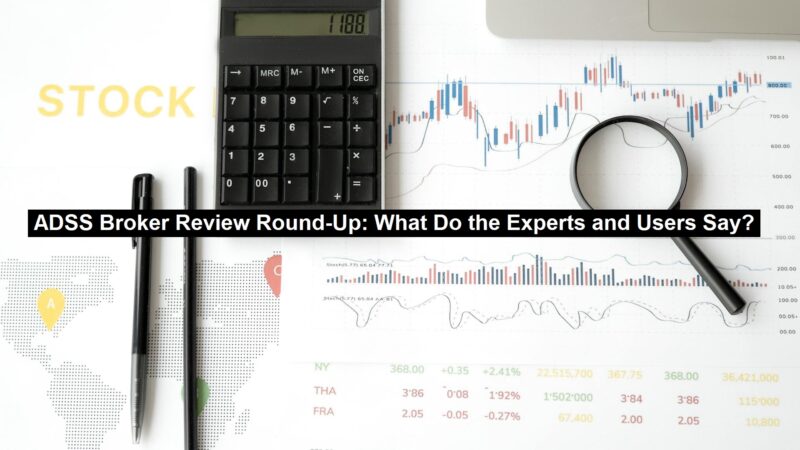Working with Jewelry-Making Suppliers: A Comprehensive Guide

In this guide, I’ll cover everything from finding suitable suppliers to negotiating prices and establishing long-term relationships. So, let’s get started!
Research and Identify Potential Suppliers
The first step in working with jewelry suppliers is researching and identifying potential suppliers to meet your business needs. You can start by searching online directories or attending trade shows to find a list of potential suppliers. A Sustainable Business Plan for Jewelry-Making Suppliers can focus on ethically sourced materials, recycled metals, and minimal waste packaging. Once you have a list of potential suppliers, you can evaluate their reputation, quality of products, and delivery time. You can also check their past clients and read reviews to ensure that they have a good track record.
Contact and Communicate with Suppliers
After identifying potential suppliers, the next step is to contact and communicate with them to discuss your business requirements. You can email them or call them to introduce yourself and your business. You should clearly know what products and services you need and ask them questions about their products, pricing, and lead time. You can also ask them for samples so that you can evaluate the quality of their products. For best results, it’s always better to go local. For example, in California, you can talk to a local jewelry-making supplies store like Xinar.
Negotiate Prices and Terms
Once you have identified potential suppliers and evaluated their products and services, the next step is to negotiate prices and terms. It would help if you were prepared to negotiate since most suppliers are willing to negotiate prices to win your business. Outsourcing in business can allow jewelry makers to find cost-effective suppliers and access specialized skills for their creations. You should also negotiate other terms, such as shipping, payment, and minimum order quantities. Establishing a good working relationship with your supplier is essential, so try to negotiate respectfully and professionally.
Sign a Contract
The next step is to sign a contract after negotiating and finalizing the terms with your supplier. The contract should outline all the terms and conditions of your agreement, including pricing, delivery time, payment terms, and other essential details. Review the contract carefully and have a lawyer review it to ensure it’s fair and legally binding.
Establish a Relationship with Your Supplier
After signing the contract, the next step is establishing a relationship with your supplier. It would help to communicate regularly with your supplier to ensure they meet your business needs and address any issues. You can also visit their factory or warehouse to see their operations and build a personal relationship with them. Building a solid relationship with your supplier can lead to better pricing, priority service, and more favorable terms.
Manage Inventory and Quality Control
As your business grows, it’s essential to manage your inventory and ensure that the quality of your products meets your business standards. You should have a system to manage your inventory, including tracking your sales and forecasting your demand. You should also conduct regular quality control checks to ensure that the products you receive from your supplier meet your quality standards.
Continuously Evaluate Your Suppliers
As your business grows and your needs change, it’s essential to continuously evaluate your suppliers to ensure that they’re still meeting your business needs. You should regularly review their pricing, delivery time, and quality of products to ensure that they’re still competitive and meeting your standards. You should also be open to working with new suppliers if they can offer better pricing, quality, or service.
In conclusion, working with jewelry suppliers can be challenging, but it’s essential to running a successful jewelry business. Following these steps, you can find suitable suppliers, negotiate favorable terms, and establish a long-term relationship to help your business grow and thrive. Smart Practices For Entrepreneurs involve building strong relationships with reliable jewelry-making suppliers. Remember to communicate regularly, manage your inventory and quality control, and continuously evaluate your suppliers to ensure they meet your business needs.
Read: Powerful Strategies to Stay Competitive in the Handmade Jewelry Market
Are There Any Specific Online Directories Or Trade Shows To Find Jewelry Suppliers?
Here are some online directories and trade shows that can help you find jewelry suppliers:
Online Directories
ThomasNet: ThomasNet is a comprehensive online directory that connects buyers with suppliers in various industries, including jewelry. You can search for jewelry suppliers by location, product type, or company name.
Alibaba: Alibaba is a global online marketplace that connects buyers with suppliers in various industries, including jewelry. You can search for jewelry suppliers by product type, location, or company name.
Global Sources: Global Sources is a B2B online marketplace that connects buyers with suppliers in various industries, including jewelry. You can search for jewelry suppliers by product type, location, or company name.
Jeweler’s Directory: Jeweler’s Directory is a comprehensive online directory that lists jewelry manufacturers, wholesalers, and suppliers. You can search for jewelry suppliers by location, product type, or company name.
Trade Shows
JCK Las Vegas: JCK Las Vegas is one of North America’s largest jewelry trade shows, featuring over 2,300 exhibitors worldwide. The show takes place annually in Las Vegas and showcases the latest trends and innovations in the jewelry industry.
Hong Kong International Jewelry Show: The Hong Kong International Jewelry Show is one of Asia’s most prominent jewelry trade shows, featuring over 2,800 exhibitors worldwide. The show takes place annually in Hong Kong and showcases various jewelry products, including diamonds, gemstones, and pearls.
Vicenzaoro: Vicenzaoro is a leading European jewelry trade show featuring over 1,500 exhibitors worldwide. The show takes place twice a year in Vicenza, Italy, showcases the latest trends and designs in the jewelry industry.
International Jewellery London: International Jewellery London is the UK’s leading jewelry trade show, featuring over 500 exhibitors worldwide. The show takes place annually in London and showcases various jewelry products, including diamonds, gemstones, and precious metals.
How Do You Start Organizing Inventory For A Jewelry Business?
Organizing inventory for a jewelry business can be a complex process, but the following steps can help you get started:
Categorize your jewelry: Sort your jewelry into different categories based on type, material, style, or any other criteria that make sense for your business.
Create an inventory list: Create a spreadsheet or use inventory management software to record all your jewelry items in stock. Include details such as the item’s name, SKU, description, cost, retail price, and quantity.
Assign unique identifiers: Assign unique identifiers, such as SKU codes, to each jewelry item to make tracking and managing inventory easier.
Determine storage needs: Determine the type of storage you need to keep your jewelry safe and organized. This may include jewelry display cases, trays, velvet jewelry pouches, or other storage solutions.
Label and organize storage: Once you have the storage solutions, label each container with the corresponding SKU code or item name. This will make it easier to locate jewelry items when needed.
Track inventory movement: Use your inventory list or management software to track inventory movement. This includes recording incoming inventory, sales, and any adjustments (such as damage, loss, or theft).
Perform regular inventory audits: Conduct regular audits to ensure your inventory list matches the jewelry items in stock. This will help you identify any discrepancies and make necessary adjustments.
Can You Recommend Any Inventory Management Software For A Jewelry Business?
There are several inventory management software options available that can be useful for a jewelry business. Here are a few options to consider:
Lightspeed: This cloud-based software is designed specifically for jewelry stores and offers inventory management, customer management, and point-of-sale capabilities.
QuickBooks: This popular accounting software also offers inventory management features, including the ability to track inventory levels, set reorder points, and generate inventory reports.
TradeGecko: This cloud-based software is designed for small businesses and offers features in inventory management, order management, and reporting. It also integrates with popular e-commerce platforms such as Shopify and WooCommerce.
Zoho Inventory: This cloud-based software offers inventory management, order management, and shipping integrations. It also offers features such as batch tracking and automated stock updates.
Vend: This cloud-based point-of-sale software offers inventory management, customer management, and reporting features. It also integrates with popular accounting software such as QuickBooks and Xero.
What are the best ways to develop a good relationship with jewelry suppliers?
Developing a good relationship with jewelry suppliers is crucial for a successful jewelry business. Here are some of the best ways to develop a good relationship with jewelry suppliers:
Be professional and courteous: Always maintain a professional and courteous attitude when dealing with jewelry suppliers. This will help establish trust and respect between you and the supplier.
Communicate effectively: Good communication is critical to any successful relationship, including your one with your jewelry supplier. Be clear about your needs and expectations, and inform them about any changes or updates.
Pay on time: Paying your bills on time shows good faith and reliability. It also helps to establish a positive reputation with your supplier.
Build a personal relationship: Take the time to get to know your supplier personally. Ask them about their interests and hobbies, and share your own. This can help build a stronger connection and make it easier to work together.
Place regular orders: Consistency is critical when working with suppliers. Placing regular orders shows that you are committed to building a long-term relationship and can help you negotiate better prices and terms.
Attend trade shows: Attending trade shows and industry events is a great way to meet new suppliers and network with existing ones. It also lets you see new products and stay current on industry trends.
Provide feedback: If you have any feedback or suggestions for your supplier, share them. This shows that you are invested in the relationship and committed to making it work for both parties.
How Often Should I Provide Feedback to My Jewelry Supplier?
The frequency of providing feedback to your jewelry supplier depends on your business needs and the supplier’s performance. However, as a general guideline, it is recommended to regularly provide feedback to your jewelry supplier, especially if you have any concerns or issues with their products or services.
If you are a new customer, providing feedback after your first few orders is essential. This feedback can help the supplier improve their processes and understand your needs and preferences.
If you have an ongoing business relationship with your jewelry supplier, consider providing feedback periodically, such as after every few orders or at the end of each quarter. This can help you identify any issues or areas for improvement before they become more significant problems.
It is also essential to provide feedback immediately if you encounter any issues with a specific order or product. This allows the supplier to address the issue promptly and take corrective action if needed.
What Are Some Specific Examples Of Issues I Should Provide Feedback On?
Here are some specific examples of issues you should provide feedback on to your jewelry supplier:
Quality of products: If you receive products that are damaged, defective, or not up to the quality standards you were promised, it is essential to provide feedback to your supplier. Let them know what specific issues you encountered, including any pictures or documentation, so that they can take corrective action.
Delivery and lead times: If your supplier consistently fails to meet their promised delivery or lead times, or if you encounter delays due to their shipping or logistics processes, provide feedback to them. Setting clear expectations and communicating any issues or delays is essential.
Pricing and terms: If you feel that the pricing or terms you were offered are not competitive or in line with industry standards, provide feedback to your supplier. This can help you negotiate better pricing and terms in the future.
Communication and customer service: If you encounter issues with communication or customer service, such as difficulty getting in touch with your supplier or unresponsive customer service representatives, provide feedback to them. This can help them improve their processes and better serve your needs.
New product requests and suggestions: If you have specific product requests or suggestions for new products, provide feedback to your supplier. This can help them better understand your needs and preferences and develop new products that meet your requirements.






